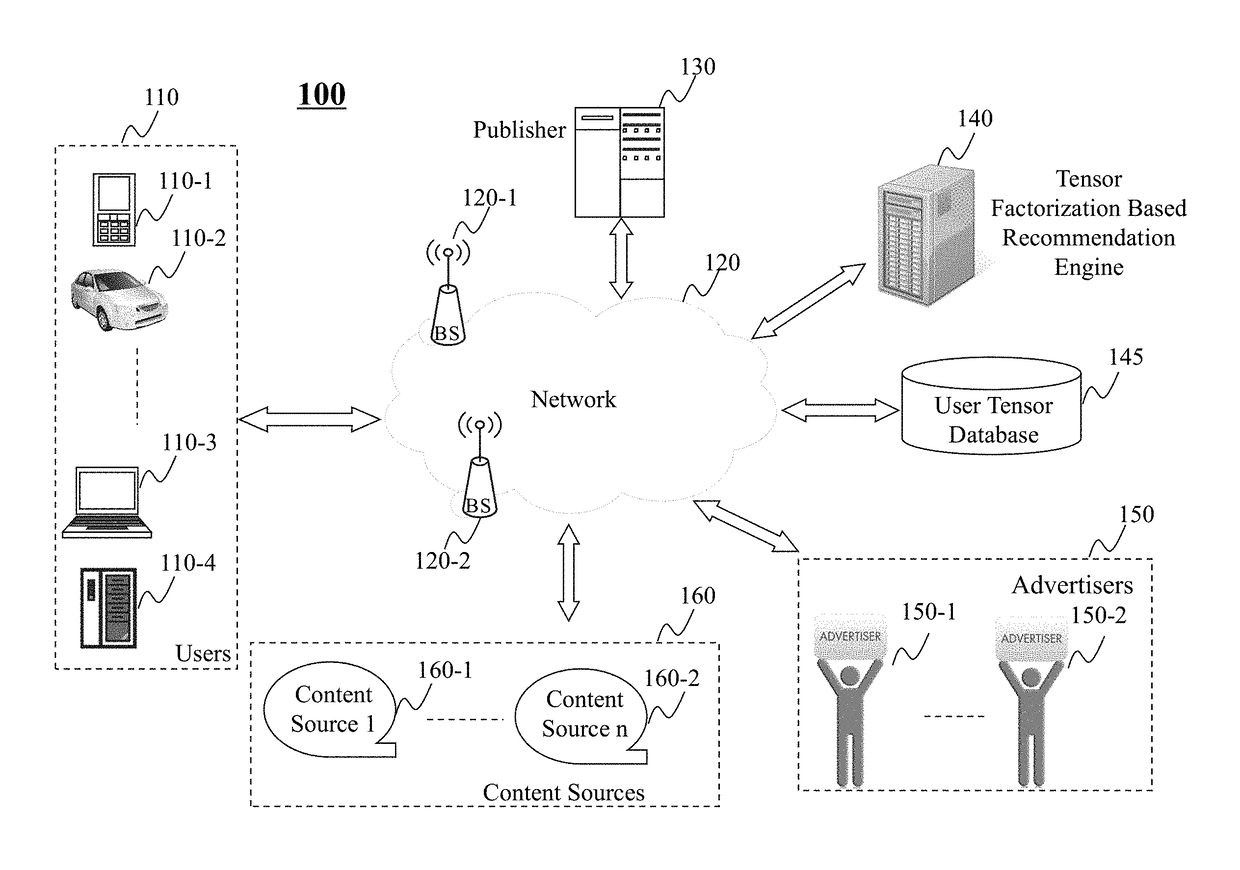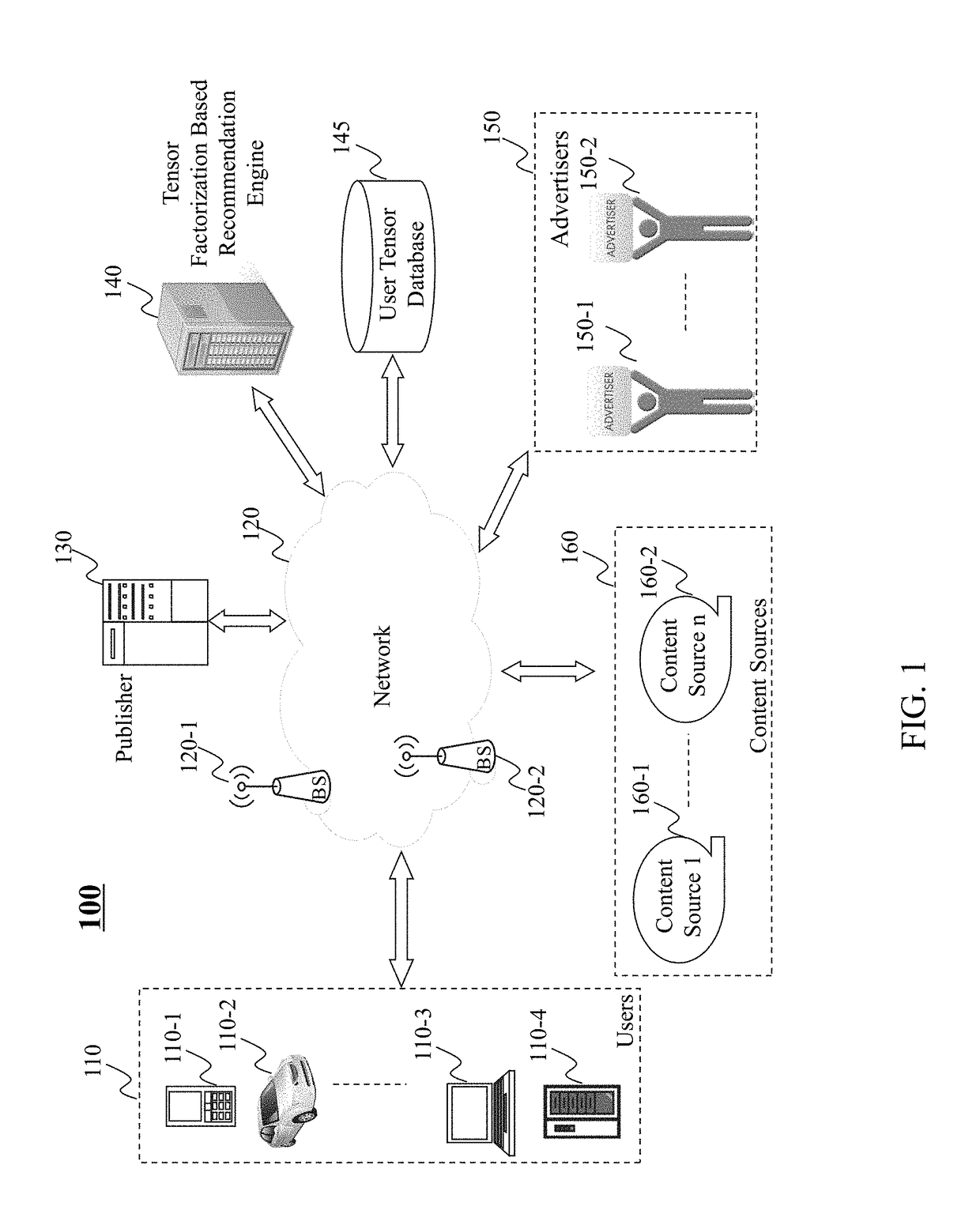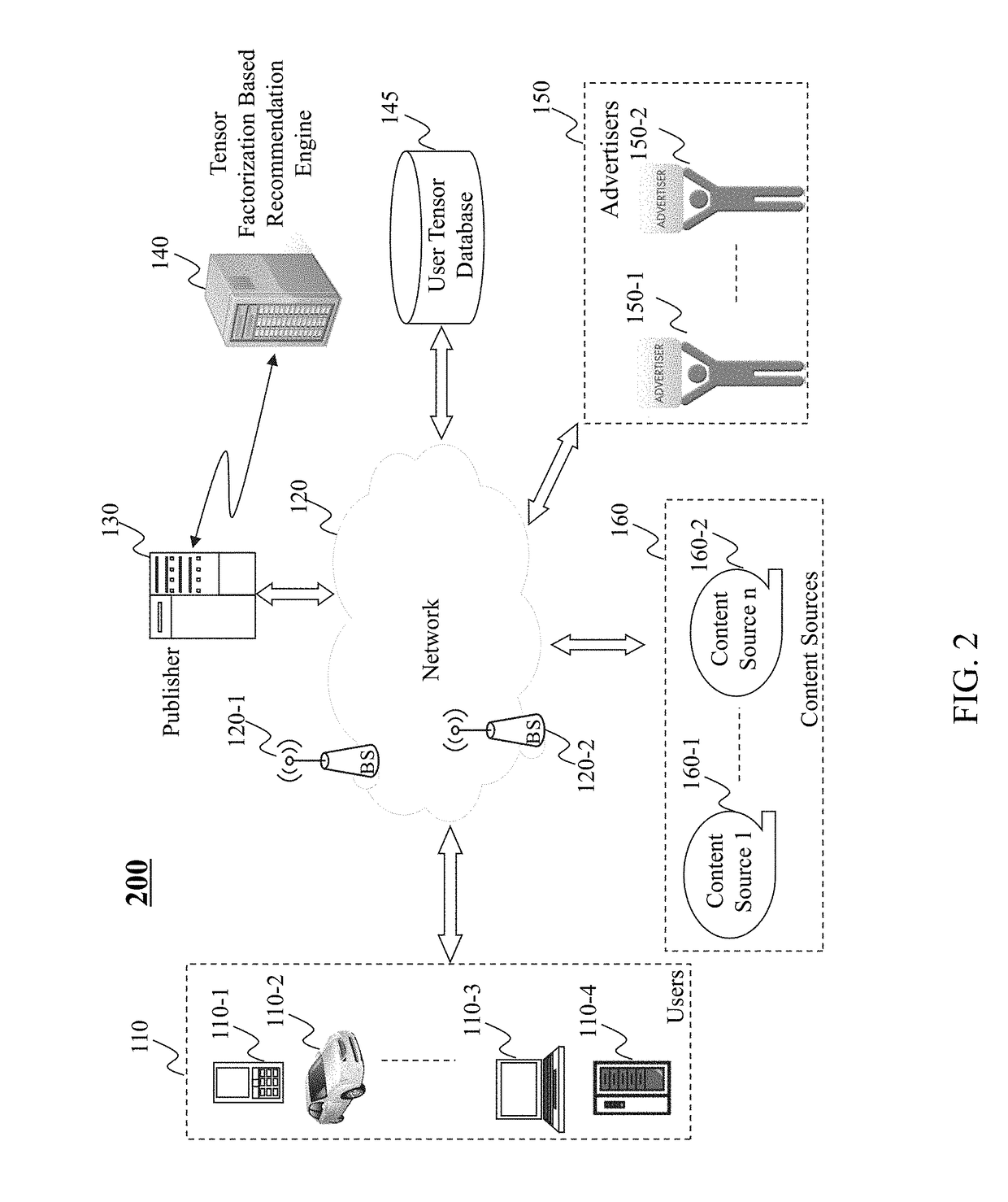Method and system for recommending content items to a user based on tensor factorization
a technology of tensor factorization and content, applied in the field of methods, systems, and programming for internet services, can solve the problems of severe learning bias and computational cost of tensor factorization methods
- Summary
- Abstract
- Description
- Claims
- Application Information
AI Technical Summary
Benefits of technology
Problems solved by technology
Method used
Image
Examples
Embodiment Construction
[0026]In the following detailed description, numerous specific details are set forth by way of examples in order to provide a thorough understanding of the relevant teachings. However, it should be apparent to those skilled in the art that the present teachings may be practiced without such details. In other instances, well known methods, procedures, systems, components, and / or circuitry have been described at a relatively high-level, without detail, in order to avoid unnecessarily obscuring aspects of the present teachings.
[0027]The present disclosure describes method, system, and programming aspects of efficiently and effectively recommending content items to a user based on tensor factorization. The method and system as disclosed herein aim at improving users' online experience by recommending most proper items to the users.
[0028]The present teaching discloses a distributed, flexible nonlinear tensor factorization model, which avoids expensive computations and structural restrict...
PUM
 Login to View More
Login to View More Abstract
Description
Claims
Application Information
 Login to View More
Login to View More - R&D
- Intellectual Property
- Life Sciences
- Materials
- Tech Scout
- Unparalleled Data Quality
- Higher Quality Content
- 60% Fewer Hallucinations
Browse by: Latest US Patents, China's latest patents, Technical Efficacy Thesaurus, Application Domain, Technology Topic, Popular Technical Reports.
© 2025 PatSnap. All rights reserved.Legal|Privacy policy|Modern Slavery Act Transparency Statement|Sitemap|About US| Contact US: help@patsnap.com



